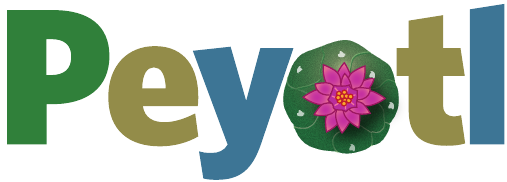-
Notifications
You must be signed in to change notification settings - Fork 7
Home
peyotl is a python package written to make it easier to
interact with the software produced by the [Open Tree of Life project] 1.
Specifically, to:
-
interact with a local version of the [phylesystem] 2 repository of curated phylogenetic studies ;
-
call web services associated with the studies (served by web app running the [phylesystem-api code] 3);
-
call web services associated with taxonomic resolution services (running [taxomachine] 4 );
-
call web services associated with Open Tree of Life's "synthetic" estimate of the tree of life (running [treemachine] 5);
-
call web services associated with an annotation database (that we have not built yet)
Currently peyotl is used to implement most of the functionality in the [phylesystem-api] 3 backend of the study curation tool.
Running
$ python setup.py test
will invoke python unittest, and running:
$ sh test.sh
will run these test and some shell-based tests of interest to some developers.
You will seem some tests skipped because of lack of mini_system or mini_phyl. This is normal. Mark and Emily Jane have some unittests of git interactions that require privileged access to a particular testing repository. Tests involving this repo should be skipped.
See https://github.com/OpenTreeOfLife/api.opentreeoflife.org/wiki/HoneyBadgerFish for full documentation of the NeXML <-> NexSON conversion convention.
$ python scripts/nexson/nexson_nexml.py input -e 1.2 -o output
will read NeXML or NexSON as input and produce version 1.2 of the honeybadgerfish NexSON and
$ python scripts/nexson/nexson_nexml.py input -e nexml -o output
to write NeXML.
The -h command line flag reports more details about the arguments.
A test of the available format conversions (without NeXML validation) can be run with:
$ sh peyotl/test/check_nexson_nexml_clique.sh peyotl/test/data/nexson/otu.json scripts/nexson/nexson_nexml.py
If you alias your nexml validation tool to the name "validate-nexml" then you can run the check_nexml_roundrip.sh and check_nexson_roundrip.sh
Other dependencies for these test scripts are xmllint and saxon-xslt. Note that these are not dependencies for normal usage of
Caveat: check_nexml_roundrip.sh will fail if the attribute order differs from the order used by nexson_nexml.py
MTH's validate-nexml is shell script:
#!/bin/sh
java -jar "${NEXML_PARENT}/xml-validator-read-only/target/xml-validator-1.0-SNAPSHOT-jar-with-dependencies.jar" -s "${NEXML_PARENT}/nexml/xsd/nexml.xsd" $@
where xml-validator-read-only is from http://code.google.com/p/xml-validator/source/checkout and nexml is a clone of https://github.com/nexml/nexml
You can tweak this by deciding on your NEXML_PARENT dir and running:
$ cd "${NEXML_PARENT}"
$ svn checkout http://xml-validator.googlecode.com/svn/trunk/ xml-validator-read-only
$ git clone https://github.com/nexml/nexml.git
$ cd xml-validator-read-only
$ mvn package
-
Improve tests of NexSON and complete transition to v1.2 syntax as the preferred syntax
-
MTH needs to move NexSON validation from the API repo to peyotl
-
Build up a set of utility phylogenetic functions that are agnostic to NexSON version like the current peyotl.nexson_syntax.add_resource_meta
-
Create a peyotl.native subpackage that implements the generic phylogenetic utilities under the assumption that the NexSON blob is v1.2
-
Improve struct_diff: better tests and better feature for representing sets of changes.
- functions for comparing an ancestor to 2 descendants, for summarizing compatible or conflicting
-
Wrappers around web-service calls to open tree API web services
-
wrappers for treemachine/taxomachine web services.
-
wrappers for oti indexing web services.
-
support for input of parts of the OTT taxonomy, and taxonomic operations.
-
translation to DendroPy, BioPython, or PyCogent data structures from NexSON.
-
export to other phylogenetic file formats
peyotl is primarily written by Mark Holder, Emily Jane McTavish, and Jim Allman, but see the [contributors file] 6 for a more complete list of people who have contributed code.
The fabulous Karl Gude created the logo.
Several parts of the setup.py, logging, documentation, and test suite were based on Jeet Sukumraran's work in the DendroPy package.
The sortattr.xslt stylesheet (which is only used in round-trip testing) is from http://stackoverflow.com/questions/1429991/using-xsl-to-sort-attributes
The peyotl.phylesystem.git_actions (and the tests) were a part of the api.opentreeoflife.org repo which was primarily the work of Duke Leto (at that time).
Jim Allman, Karen Cranston, Cody Hinchliff, Mark Holder, Peter Midford, and Jonathon Rees all participated in the discussions that led to the NexSON mapping.
The peyotl/test/data/nexson/phenoscape/nexml test file is from https://raw.github.com/phenoscape/phenoscape-data/master/Curation%20Files/completed-phenex-files/Characiformes/Buckup_1998.xml PhenoscapeKB, [U.S. National Evolutionary Synthesis Center], http://kb.phenoscape.org; [Feb 16, 2014] The citation for the data is in the nexml doc itself.
Etymology: According to Wikipedia, peyotl is the Nahuatl word for Lophophora williamsii.
